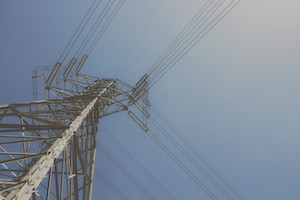Lake effect snow piles up in Great Lakes region, impacting Thanksgiving travel
LANSING, Mich. — Residents of the Great Lakes region are in for a snowy Thanksgiving, as a weather system continues to drop precipitation across the area, particularly in the Upper Peninsula of Michigan.
Snowfall that began Wednesday persisted Thursday with winds and snow bands out of the north and northwest. A blizzard warning is in effect in Alger County, east of Marquette, Mich, until 7 p.m. Thursday night.
The heaviest snowfall is expected to hit west of the town of Munising, according to the National Weather Service, with up to 13 inches of additional of snow accumulation possible. The snow bands will likely taper off starting in the western counties of the Upper Peninsula as the day progresses.
Lily Chapman, a meteorologist with the National Weather Service in Marquette, said 15 inches of snow were measured at her office Thursday morning. Near Bessemer, Michigan, about 113 miles east of Duluth, Minn., Chapman said the National Weather service received reports of over 18 to 28 inches of snow.
“It varies pretty quickly depending on things like elevation or where any of our stronger bands have been able to line up,” Chapman said.
Lake effect snow is characterized by thin bands of clouds that can produce heavy snowfall. Some areas can see much more snow than others nearby thanks to the narrow bands.
The phenomenon occurs when cold air from Canada is blown over the warmer water of the Great Lakes: Superior, Michigan, Huron, Ontario and Erie. Warm air from the lakes pushes the moisture in the sky higher into a zone most conducive to snowfall. The clouds that form as a result can dump 2 to 3 inches per hour and sometimes more.
The weather particularly affects Michigan, Ohio and New York, but lake effect snow can also happen over other large bodies of water, like the Great Salt Lake in Utah.
About 10 miles west from Bessemer near Montreal, Wisconsin, the National Weather Service reported 33 inches of snow in one location early Thursday morning. Roy Eckberg, a meteorologist with the National Weather Service in Green Bay, said the elevation of the area creates an even better environment for clouds to create snow.
“So you not only have the lake effect, you’ve got the lift of the terrain,” he said. “So that area can get some pretty interesting snow totals like this event.”
The traveling bands of lake effect snow can cause sudden and extreme whiteouts, making driving hazardous. Travel was difficult across the Upper Peninsula on Thursday with low visibility, Chapman said.
Additionally, strong winds of up to 45 mph posed a threat of creating large snow drifts over roads and power outages. Over 1,000 power outages were reported near Houghton, Michigan, about 100 miles west of Marquette on Thursday morning, according to the utility provider the Upper Peninsula Power Company.
Similar power outages were reported by Consumers Energy on the coast of Lake Michigan near Holland, about 170 miles west of Detroit. The National Weather Service of Grand Rapids expected about two inches of snow Thursday with high gusts of wind of 45 mph near the lakeshore. The weather service warned of slick roads.
The lake effect snow is expected to ease west to east as Friday approaches. A different and less severe weather system over the weekend is expected drop a few more inches of snow on the Upper Peninsula, according to the weather service.
About 2 to 3 inches of snow were reported near Buffalo, N.Y., on Thanksgiving morning, and a lake effect snow warning was in effect until early Saturday morning.












